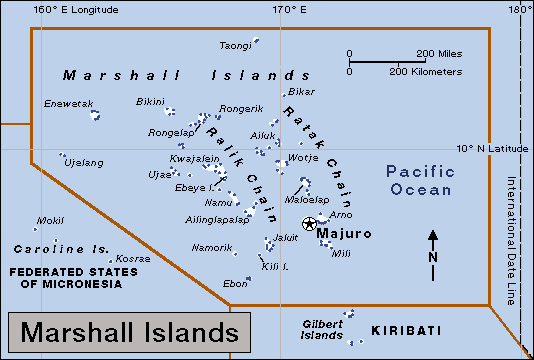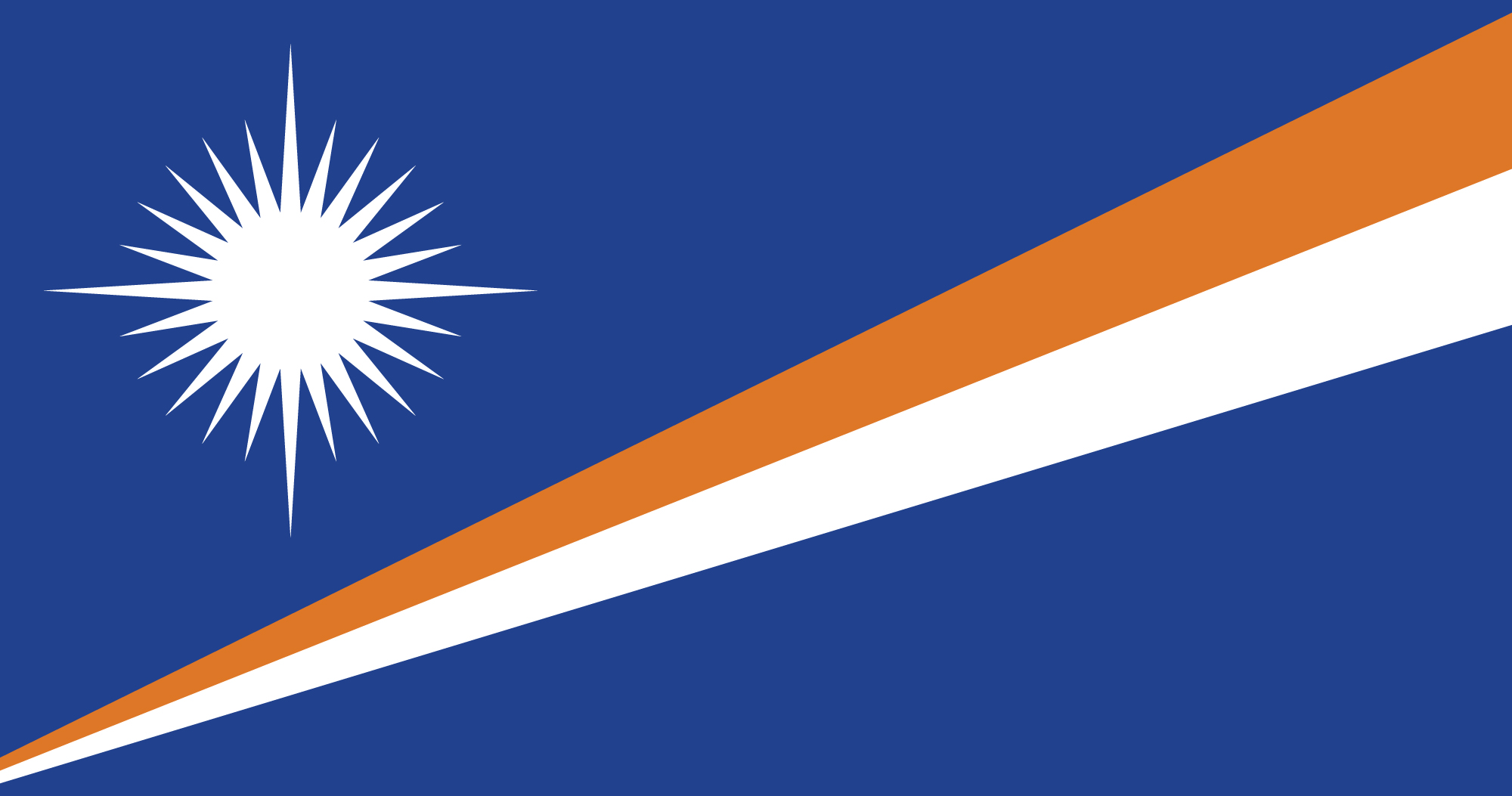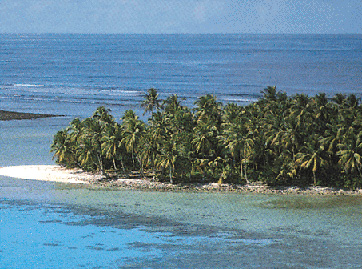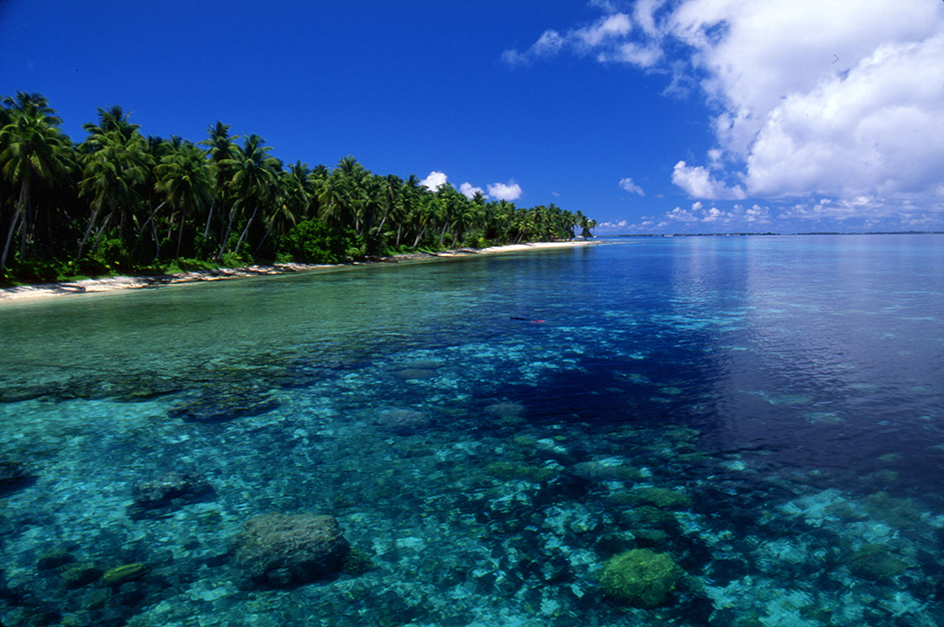Marshall Islands is a country in the North Pacific Ocean. It consists of 29 ring-shaped strips of land called atolls and 5 tiny islands. The country has a total land area of only about 70 square miles (181 square kilometers). But the land is scattered over about 780,000 square miles (2,020,000 square kilometers) of ocean.

The United States gained control of the Marshall Islands in 1944. Although the Marshalls now form an independent country, the United States is responsible for the country’s defense. The atoll of Majuro is the capital. The U.S. dollar serves as the basic unit of currency. The country’s official name is Republic of the Marshall Islands. The national anthem is “Forever Marshall Islands.”
Government.
The Marshall Islands is a parliamentary democracy. The parliament, called the Nitijela, has 33 members. The members of the Nitijela are elected by the people. The Nitijela elects a president from among its members. The president appoints cabinet ministers to handle government operations. The 12-member Council of Iroij (traditional chiefs) reviews legislation affecting customary law.

People.
Most of the people of the Marshall Islands are Micronesians (see Pacific Islands (Micronesians)). About half of the country’s approximately 61,000 people live on Majuro Atoll. Another 20 percent reside on Ebeye Island in Kwajalein Atoll. The rest of the people are scattered among the mostly rural outer islands. The country’s official languages are Marshallese and English. 
Life in the country’s urban areas has begun to resemble life in the United States. Residents depend heavily on food, clothing, and other goods imported from the United States and other countries. Most people live in simple wooden or cement houses with iron roofs. Electric service, telephones, and televisions are common.
A more traditional way of life continues in rural areas. Rural men provide food by fishing and raising such crops as breadfruit, arrowroot, pandanus, and coconuts. They build small thatched houses or wooden houses with tin roofs. Rural women run the household, prepare meals, care for children, and make handicrafts. Most of the people are Christians, but some follow the Baha’i Faith.
Land and climate.
Most of the country is made up of atolls, which consist of clusters of coral islets and strips of land surrounding a lagoon. The climate is hot and humid. The average temperature is about 81 °F (27 °C). Average annual rainfall is 80 inches (200 centimeters) in the north and 160 inches (410 centimeters) in the south.

Economy.
The chief employers in the Marshall Islands are the country’s national government and a United States missile base on Kwajalein Atoll. Coconuts rank as the main agricultural product. Copra (dried coconut meat), fish products, and handicrafts are the chief manufactured products. Tourism is a small, but growing, industry.
History.
The first people to settle on the islands probably came from Southeast Asia between A.D. 500 and 1200. In the early 1500’s, Spanish explorers became the first Europeans to arrive. The Marshall Islands are named for British Captain John Marshall, who saw the islands in 1788 as he sailed from Australia to China.
Germany gained control of the Marshalls in 1886. Japan took over the islands in 1914, at the beginning of World War I. In 1944, during World War II, the United States invaded the Marshalls and defeated the Japanese in major battles at Kwajalein and Enewetak atolls. In 1947, the United States began administering the islands as part of the United Nations Trust Territory of the Pacific Islands. Between 1946 and 1958, the U.S. military tested nuclear weapons on Bikini and Enewetak atolls. Before the testing, the inhabitants had been resettled on other islands as a safety measure. For further details, see Bikini Atoll; Enewetak.
The Marshall Islands adopted its own constitution in 1979. In 1986, the United States granted independence to the Marshall Islands. Under a Compact of Free Association, the United States retained use of the missile testing range at Kwajalein Atoll. In return, the United States agreed to defend the Marshall Islands and provide economic aid.
